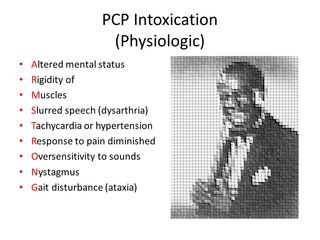
Alcoholism
March 2 Madness: 'Jeepers Creepers'
Viewing 'Jeepers Creepers' through a psychiatrist's lens
Posted March 31, 2019
Introduction
I provide an annual didactic at Rutgers Robert Wood Johnson Medical school called “March 2 Madness” where learners pick the winners of head-to-head match-ups from a 64-team bracket that parallels the NCAA Division I Men's Basketball Tournament. We have replaced the 64 basketball teams with our field of 64 of the top monsters in movie history. During each round of the NCAA Basketball Tourney, we post our corresponding regional match-ups for learners to select the winner over Twitter Poll or on my website (see my profile for more details). Those who vote on the website can click on the monster to access a PDF that relates the film to the field of psychiatry. After each round, I choose a "Most Valuable Pariah" (MVP), a profile of a monster eliminated from the competition. The following post is a blog of the MVP from the Sweet 16 (third round). This post is on the Creeper from Jeepers Creepers (2001). As of this posting, the film holds an audience score of 48 percent on Rotten Tomatoes and a score of 6.2 out of 10 on IMDb.
Synopsis
Jeepers Creepers is a 2001 horror film written and directed by Victor Salva that takes its name from the 1938 song first premiered by Louis Armstrong (remember this for later!). The film is inspired by actual events (Unsolved Mysteries). On Easter Day in 1990, Ray and Marie Thornton were terrorized by a motorist while playing “the license plate game” in Cold Water, Michigan. Like their counterparts in the movie, the Thorntons later came across the van and discovered a bloody sheet. While the Thorntons' experience remains unsolved, the 2001 horror movie it inspired depicts the fate of siblings Trish and Darry Jenner on their travels home from college during spring break in the Florida countryside.
On their way home, a mysterious driver attempts to run Trish and Darry off the road with his truck. After barely escaping a second time, Darry convinces Trish to double back to investigate what they saw earlier at the “psycho version of the Sistine Chapel.” The two find an old woman (an oracle) who tells them of “The Creeper,” a demonic keeper of a “house of pain” who hunts every 23rd spring for 23 days by striking fear into its victims in order to smell if there’s something it likes. It then feasts on the terrified victims’ body parts to reconstitute and strengthen itself.
The eponymous “Creeper” is the reincarnation of Spring-heeled Jack, a supernatural entity of English folklore of the Victorian era (sightings were especially prevalent in London). The cyclical nature of his hunting sprees parallels that of other geographically isolated mythical characters, such as the Mothman (West Virginia) and It (Maine).
How it relates to the field of psychiatry
Beyond the role urban legends play in the psychology of a culture, Jeepers Creepers is useful in reviewing the harmful effects of two drugs: alcohol and phencyclidine (PCP). In the opening scene, Darry recounts the cautionary tale of Kenny and Darla (class of ’78), a prosocial warning of the dangers of drinking and driving on prom night (a la Weird New Jersey’s Annie’s Ghost in Totowa, NJ) (1).

Hallucinogens are classified into three subgroups: a) deliriants, b) psychedelics, and c) dissociatives. PCP is a dissociative drug that exerts its mood- and mind-altering effects by increasing glutamate by binding to the N-methyl-D-aspartate (NMDA) receptor. The recreational use of PCP may lead to an acute intoxication syndrome with behavioral and physiologic components. Later in the movie, Darry and Trish are trapped in a police station when the Creeper’s rampage is reminiscent of the scene from The Terminator (1984). Similar to the cyborg portrayed by Arnold Schwarzenegger, the Creeper demonstrates the behavioral (belligerence and agitation) and physiologic (diminished pain response when it’s described as wearing body armor by police) manifestations of PCP intoxication. For a review of the signs of PCP's physiologic effects, learners should remember the acronym ARMSTRONG (Table 1).
It’s only right that the final thought in this blog parallels the final scene in the film. Co-occurring use of alcohol and PCP may lead to suicidal behaviors and other symptoms including (ironically) rapid eye movements (nystagmus), eyes rolled to the back of the head, and a vacant stare.
References
Annie’s ghost, Totowa, 4:1, https://weirdnj.com/stories/ghosts-index/

